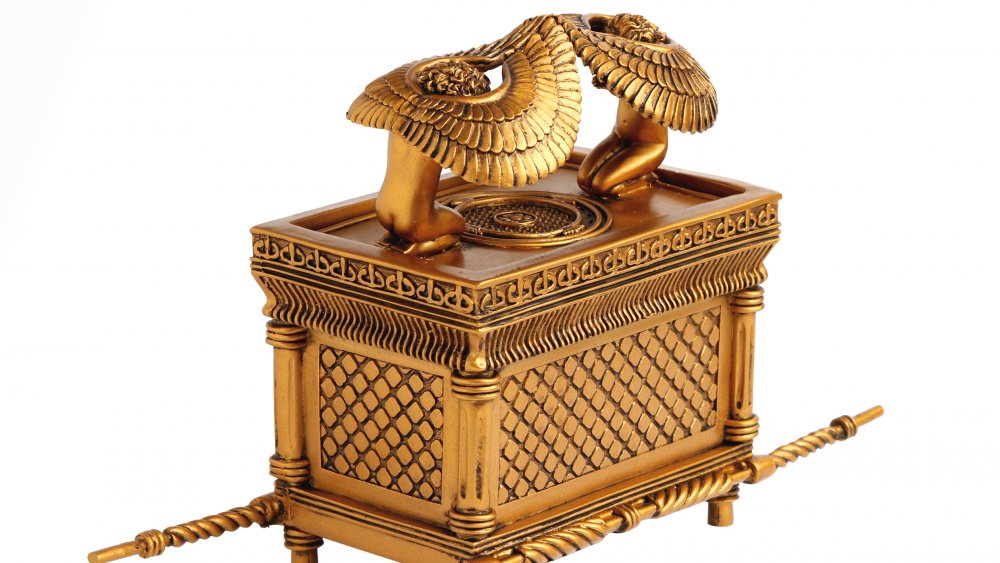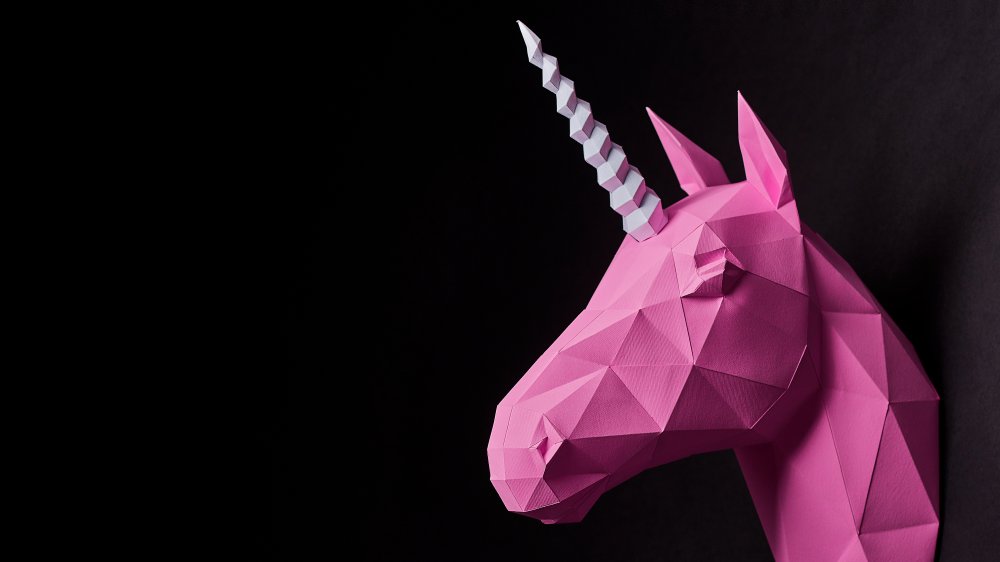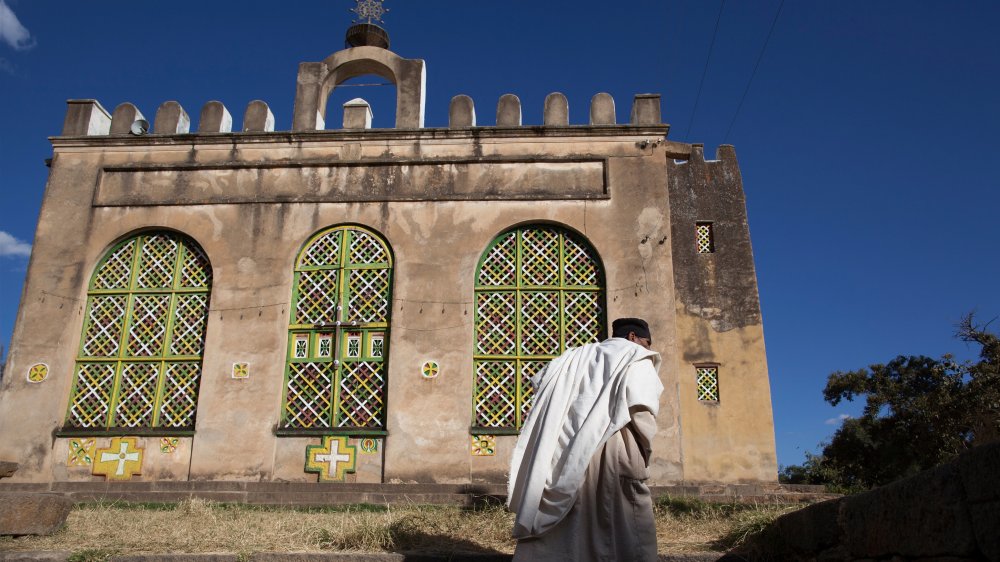The Surprising Place The Ark Of The Covenant Was Kept
If you've seen Raiders of the Lost Ark, you're probably familiar with the Ark of Covenant. It's one of the most famous lost treasures of the world, with so much mystery surrounding its whereabouts. We get some clues from the Bible about where people kept the Ark, but when you read through the words, you'll be a little surprised.
The Ark of the Covenant holds the stone tablets upon which the Ten Commandments, which were entrusted to Moses, are inscribed. The ark itself held special powers — never mind that it housed some of the most important religious artifacts of all time. LiveScience described a time when the River Jordan was said to have stopped flowing to allow the priests carrying the ark to cross safely. When the Philistines stole the ark from the Israelites, there was suddenly an outbreak of diseases in the Philistine camp, forcing them to return it.
Obviously, the ark is something of great importance for many religions, and even more so for the Israelites who escaped Egypt. They carried the ark with them during the Exodus, and, because of its importance, they constructed a place to shelter it, called a tabernacle, to keep it safe while they rested. This tabernacle was not just any tent; the Bible described precisely how the tabernacle should be made, and what materials should be used to make it.
The outer tent was made of magical skins
According to the Bible, in Exodus, the tabernacle is basically made up of 10 curtains of fine twisted linen of blue, purple, and crimson yarn. These curtains should be 28 cubits long and four cubits wide. Five curtains are joined together with loops of blue linen on the outside. There should be 50 loops and clasps made of gold. There's another layer of curtains from goat hair, about 11 of them. The rest of the structure was acacia wood poles that are about 10 cubits tall. (A cubit, by the way, is about 18 inches.) The frames have feet of silver.
The tabernacle also has another layer of leather, possibly to protect it from outside elements. It should be made from the leather of rams dyed red and another layer of leather from another animal. Depending on the translation, it could be badger, goatskin, porpoise, or sea cows. Badger and goatskin are relatively easy to procure, but porpoises and sea cows are not exactly easy to come by if your people are escaping through the desert.
But the outer covering may have been made of leather from an altogether different animal, one that no one has credibly seen before: unicorns. Chabad explained the covering, or tachash, was made of a kosher animal that had a single horn.
So we can't prove unicorns exist?
The animal's skin had six colors, and the whole animal was about 50 feet long. So it's highly possible that the Ark of the Covenant was kept in a tent made of unicorn skin. Unfortunately, we no longer have access to the tabernacle, because it, too, is lost, like the ark itself. So researchers cannot examine it and determine once and for all if unicorns exist. (Imagine if we can prove unicorns exist? Children everywhere will rejoice.)
The ark was housed in a temple in Jerusalem, wrote Smithsonian Magazine, before the temple was sacked by the Babylonians in 586 BCE. The tabernacle itself was used for various worship rituals, but there is no mention of the tabernacle or the linens and leathers that it consisted of in the temple.
Smithsonian Magazine said Ethiopian Christians have long claimed the ark sits in a chapel in the small Ethiopian town of Aksum. There, it is guarded by virgin monks who are forbidden to leave the temple until they die. They said the ark arrived 3,000 years ago. Of course, despite several tries, no one has reported seeing the Ark of the Covenant for real, so it remains forever lost. (And with it, the possible definitive proof that unicorns exist.)
And just in case you wanted to know, there's also no proof that the Nazis stole the Ark of the Covenant, or that an archaeology professor foiled their plans.


